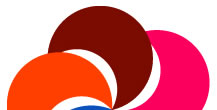Home > Learning resources > Travel guide: Native Spanish speaking countries > Cuba
Travel guide: Cuba
Festival destacado
Las charangas de Bejucal, Cuba
24 de Diciembre
Las charangas de Bejucal, el más antiguo de los festivales tradicionales cubanos, tiene lugar a final de año en Bejucal, un pequeño pueblo de la provincia de la Habana. Las charangas consisten en una actuación de “Los Tambores de Bejucal” (una conocida banda de percusión cubana internacionalmente conocida), y la tradicional rivalidad entre dos grupos congueros: los Ceibistas –miembros del grupo Ceiba de Plata, caracterizado por el color azul y el símbolo del escorpión–, y los Espinistas –miembros de la Espina de Oro, vestidos de rojo y con un gallo como símbolo. Los dos compiten en un concierto de tambores y en la construcción de la carroza más espectacular.
El festival incluye comida típica, como el “pan con lechón” (bocadillo de carne), palomitas, churros y nubes de azúcar.
Las primeras Charangas datan de 1830. Con carácter religioso se celebraban entorno a la misa del Gallo el 24 de diciembre. En esta fecha se rememoraba el momento en que los esclavos fueron liberados por sus dueños, uniéndose, posteriormente, a los negros libres y los creoles (descendientes de los colonos europeos) en los “cabildos” (asociaciones étnicas africanas). Una vez terminada la misa, los negros africanos rendían culto a los Orishas (deidades africanas), tocando los tambores, y bailando por las calles principales de Bejucal. Las características especiales de los rituales proceden de los distintos grupos étnicos (“Congos”, “Carabalíes”, “Arará”, “Mandigas”, o “Lucimíes”). Cada uno de ellos tenían diferentes tradiciones espirituales, y formaban sus propios “cabildos”. Con el tiempo surgieron rivalidades entre los “cabildos” a la hora de mostrar su orgullo cultural en la víspera de Navidad, generando así el festejo.
Los españoles y los Creoles nunca se opusieron a esta celebración, pero apodaron al grupo de negros y mestizos “Musicanga” (mala música) y formaron su propio grupo, llamado los “Malayos”. Junto con el nombre de Musicanga, los negros adoptaron el color azul y el escorpión como su animal. Por otro lado, los Malayos eligieron el color rojo y el gallo como su animal favorito.
Año tras año, gracias a la fusión de culturas que caracteriza la identidad cubana, las diferencias raciales y de clase desaparecieron. Pertenecer a un grupo u otro dependía únicamente de la preferencia personal de cada uno. Así, hacia principios del siglo XX, los grupos cambiaron sus nombres. Los “Musicanga” pasaron a llamarse Ceiba de Plata, y los “Malayos” pasaron a llamarse Espina de Oro.
Las Charangas de Bejucal, junto con el Carnaval de Santiago de Cuba y las Parrandas de Remedio, constituyen una de las tres fiestas populares más enraizadas en la cultura cubana; sin duda, una ocasión ideal para conocer Cuba. ¡Ahora, más que nunca, no te las puedes perder!
Featured festival
Charangas de Bejucal, Cuba
December 24th
The Charangas de Bejucal, the oldest of Havana's traditional festivals, takes place at the end of every year in the small Havana provincial town of Bejucal. It consists in a performance from “Los Tambores de Bejucal” (a typical Cuban percussion band of high International prestige), and festivities that involve the traditional rivalry between two conga groups: the Ceibistas –members of the Ceiba de Plata group, characterized by the color blue with a symbol of a scorpion–, and the Espinistas –members of the Espina de Oro, dressed in red and with a rooster as their symbol. They compete to play the loudest drums and to construct the most impressive float.
The festivities include typical food, such as “pan con lechón” (roast pork sandwich), popcorn, “churros” (strips of fried sweet dough), and cotton candy.
The first Charangas dates from 1830. At the beginning they had a religious character, celebrated around a mass. They were held on December 24, a date that reminds us of the moment when the slaves were freed and, subsequently, joined the free blacks and the “Creoles” (descendants from white European colonial settlers) in the “cabildos” (African ethnic associations). Once the mass was over, the black Africans devoted themselves to worshipping the “Orishas” (African deities), playing their drums, and dancing along the main streets in Bejucal. Their rituals had the special characteristics from the ethnic group they originated from (“Congos”, “Carabalíes”, “Arará”, “Mandigas”, or “Lucimíes”). All of them had different spiritual traditions, and formed their own “cabildos.” Later, rivalries formed among the “cabildos” to show their cultural pride on Christmas Eve, generating the festivities.
Spaniards and Creoles never opposed this celebration, although they nicknamed the group of black and mixed people “Musicanga” (poor music) and formed their own group called the “Malayos” (red roosters). Along with their name of “Musicanga”, the blacks adopted the blue color and the scorpion as their animal. On the other hand, the Malayos chose the red color and the rooster as their favorite bird.
Over time, thanks to the fusion of cultures that characterizes Cuban identity, racial and class differences were lost. Belonging to one or the other side was simply determined by each person’s preference. So by the early 20th century, the rival groups renamed themselves: The “Musicanga” were called Ceiba de Plata (the Silver Silk-cotton Tree); and the “Malayos”, the Espina de Oro (The Golden Thorn).
The Charangas, together with the Carnival of Santiago de Cuba and the Parrandas of Remedio, are three of the festivities with the deepest roots in the Cuban culture. Certainly not to be missed out!
Recommended Cuba travel guides
As an Amazon Associate we earn commisions from qualifying purchases made through links in this page.
Did you ever wonder why the Spanish spoken by native Cubans was at times so hard to understand?
This short 1-minute video made especially for advanced Spanish students can help you get more familiar with the Cuban Spanish accent.
More Spanish Learning Resources






